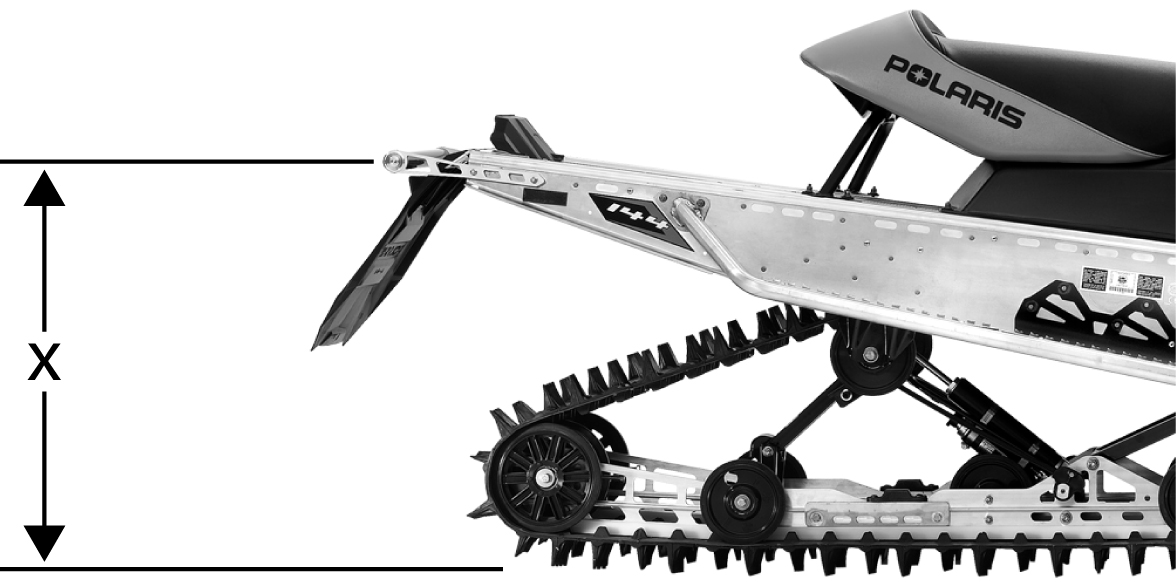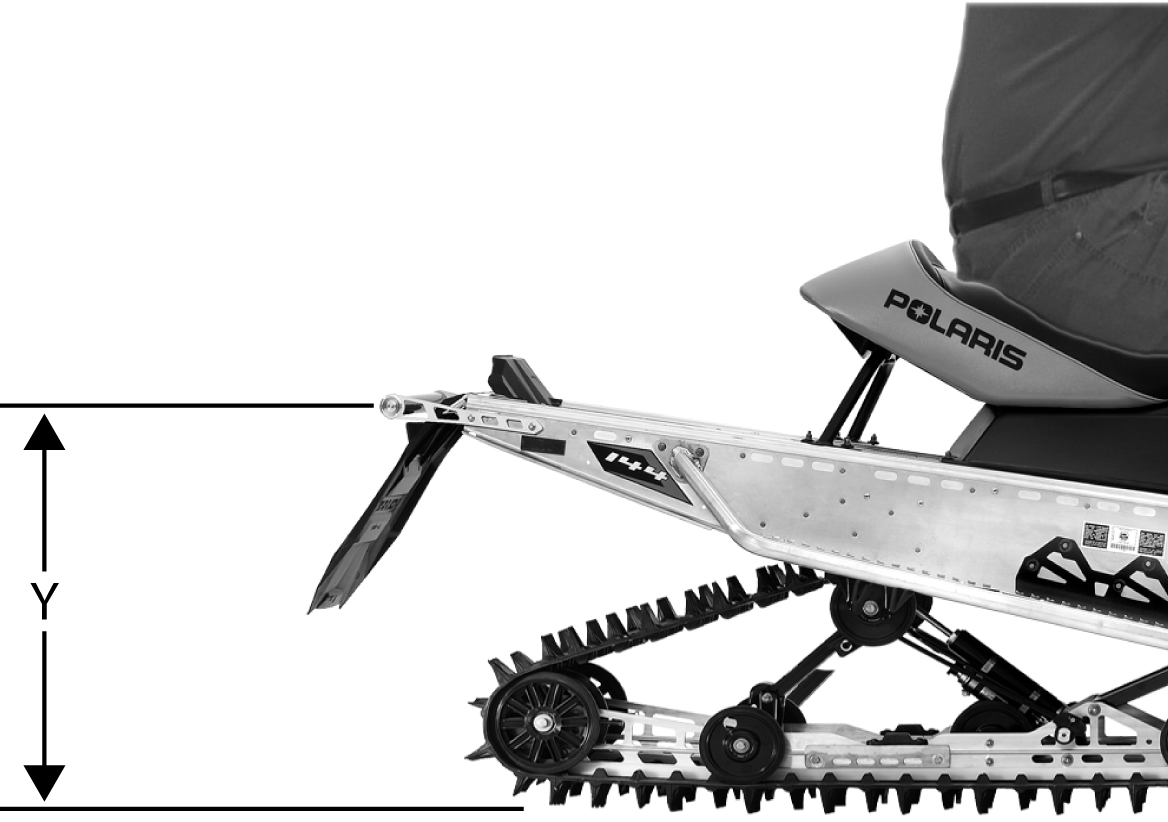
Content Source: 2020 600 Indy Owner's Manual (9929776 R02) > The Perfect Fit Chapter
| IMPORTANT |
|
The Owner's Manual for this vehicle contains warnings, instructions and other information you must read and fully understand before safely riding or performing maintenance on this vehicle.Always follow the warnings and instructions in Owner's Manual. Click the CONTENTS link above for the Table Of Contents, or download a full PDF of the Owner Manual in the Owner Support area of Polaris.com |
| TIP |
| Keep the suspension pivot points lubricated. This will reduce moisture and rust build-up and ensure proper function of the suspension components. Grease rear suspension pivots before adjusting the rear suspension. |
To set up the rear
suspension torsion spring preload, measure the distance between the
ground and rear bumper.
This is measurement X.
Take the first measurement with no rider and with the
rear suspension at full extension.
| TIP |
| The rear bumper may need to be lifted upward slightly to fully extend the suspension. |

Next, have the rider drop down hard on the seat and bounce up and down several times, collapsing the rear suspension. With the rider seated, measure the distance between the ground and the rear bumper at the exact location used for measurement X. This is measurement Y. To determine sag, commonly referred to as ride-in, subtract measurement Y from X (sag=X-Y). If the measured sag is incorrect, adjust the FRA position and/or rear torsion spring preload.

| Suspension | Recommended Sag | Adjustment | See Page |
|---|---|---|---|
| INDY (121) | 3-4 inches (7.5-10 cm) | Torsion Spring Preload | Torsion Spring Preload |
| TIP |
| This is only an initial setup, and final spring preload may vary based on rider preference and riding conditions. Accessory springs with a higher load rating are available for some models. Please see your dealer for availability. |
Ski pressure is set at the factory to deliver the optimum balance between ride and handling. If a rider prefers more ski pressure for improved steering performance, adjustments can be made to the front limiter straps. Tighten the straps to increase ski pressure. Loosen the straps to reduce ski pressure.


| TIP |
| Your dealer can help you with initial setup and additional setup instructions to help you achieve your optimum ride. A scissor stop tool is also available from your dealer. |
© Copyright Polaris Industries Inc. All rights reserved.